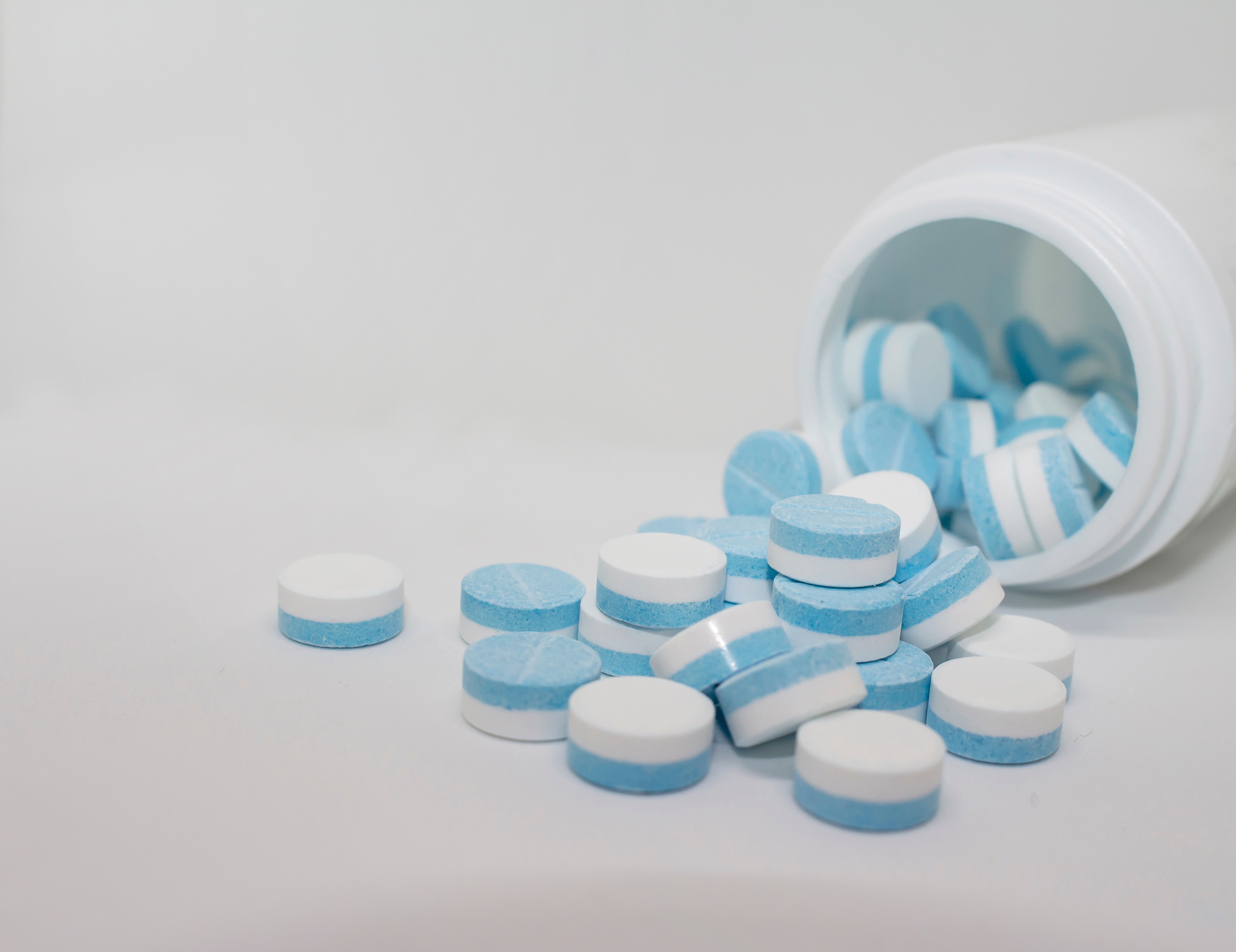Bilayer tablets are increasingly gaining immense popularity as pharmaceutical dosage forms for oral drug delivery. These tablets as the name suggests, comprise of two distinct layers (usually identified by two different colours) each of which contains a different active ingredient. Bilayer tablets can deliver combination therapy while helping achieve different drug release profiles (where one drug may be intended for an immediate release and the other for controlled/sustained release). This can optimise the treatment regimen by reducing the dosing frequency that can enhance patient compliance and convenience. It may also be necessary to formulate bilayer tablets when two incompatible drugs are intended to be delivered as a combination which cannot be blended together.
Although bilayer tablets offer several advantages, successfully manufacturing them may prove equally challenging. Bilayer tablets should be robust enough and possess the adequate mechanical strength to withstand the strain during manufacturing, handling, packaging and shipping. Manufacturing bilayer tablets and single-layer tablets are fundamentally similar; however, it is the operational intricacies that set them apart.
Manufacturing of Bilayer Tablets
Manufacturing bilayer tablets requires rotary presses that have two feed hoppers to contain and feed the two different granules intended for each layer. The granulation for the bottom layer is fed into the die cavity which then undergoes an initial or partial compression to form the first layer which is not made very hard in order to allow good cohesion with the second layer fill. The dies further are filled with granulation for the second layer which when combined with the first layer, is attains the desired total tablet weight. The two formed layers undergo a set of final compressions to achieve the desired tablet hardness and is followed by ejection.
Some of the common problems associated with the manufacturing of these tablets include delamination of tablets at the interface of the layers due to insufficient adhesion between them, cross-contamination of layers, and low yield as compared to conventional single-layer tablets, difficulty in achieving the desired weight of individual layers. Delamination although most commonly occurs between adjacent layers (interlayer delamination) may also occur within one of the layers (intralayer delamination) soon after the process of compression or after a subsequent step, or even during storage. This may result in the patient receiving an inadequate dose.
Factors Affecting the Manufacturing of Bilayer Tablets
To avert such conditions, it is extremely important to carefully select the formulation process parameters and study the properties of the materials being used.
– Selection of the Ingredients
The nature and physicochemical properties of both the active and inactive ingredients determine the strength and integrity of the bilayer tablet. Parameters of these ingredients such as brittleness, viscoelasticity, plasticity, compaction properties significantly affect the compression.
In order to prevent chances of delamination, it is recommended to keep a certain level of similarity between the layers – preferably the weight; or if that is not possible, sameness in terms of the inactive ingredients used in both the layers can also help. Maintaining such similarity helps to obtain layers of similar compaction profiles which improves the physical integrity of the tablet. If both the layers require different ingredients, formulation of layers with similar properties and compactibility is recommended to encourage superior compaction and layer adhesion. This is necessary because, if the two layers show different relaxation after compaction or different expansion after exposure to stressed conditions, they are more likely to result in an unsuccessful adhesion at the interface.
– Choosing the First Layer
One of the primary considerations while developing a bilayer tablet is selecting the first layer of the tablet rationally. The weight and control of the second layer depends on the fill of the first layer. Compression force exerted on one layer has a significant influence on the strength and interfacial adhesion between the two layers which further influences the mechanical integrity of the subsequent bilayer tablet. Studies indicate that the strength of the interface decreases with the increase in the compaction force exerted on the first layer. Therefore, the first layer is compressed partially or by applying minimal force. This layer should contain materials that exhibit superior compressibility to be able to perform good compaction under minimal force that will allow for enough space for the second layer. As the first layer is subjected to compression twice, the material that is more compactable is chosen for the first layer.
– Lubrication
Another factor that influences the interfacial strength between the layers of the tablet is the amount of added lubricant. An increased quantity of lubricant can adversely affect the strength of the tablet by deteriorating the roughness of the tablets, thereby declining the interfacial interactions between the layers.
Conclusion
Bilayer tablets offer several therapeutic benefits and are being effectively used for the treatment of diabetes, HIV and cardiovascular diseases. However, manufacturing these can involve many technological challenges. Even slight variations in compression process parameters can significantly affect the properties of each layer and therefore weaken the interfacial strength. Although intricate, bilayer tablets can be successfully produced by optimising important process parameters such as first layer tamping force, main compaction force and lubrication that are absolutely essential to produce finished products with the desired properties.
References
-
Otilia Koo, Ph.D., (Thursday, April 1, 2010). Manufacturing Process Considerations for Fixed-Dose Combination Drug Products. American Pharmaceutical Review https://www.americanpharmaceuticalreview.com/Featured-Articles/117118-Manufacturing-Process-Considerations-for-Fixed-Dose-Combination-Drug-Products/
-
2) Blicharski, T., Swiader, K., Serefko, A., Kulczycka-Mamona, S., Kolodziejczyk, M., & Szopa, A. (2019). Challenges in technology of bilayer and multi-layer tablets: a mini-review, Current Issues in Pharmacy and Medical Sciences, 32(4), 229-235. doi: https://doi.org/10.2478/cipms-2019-0039

